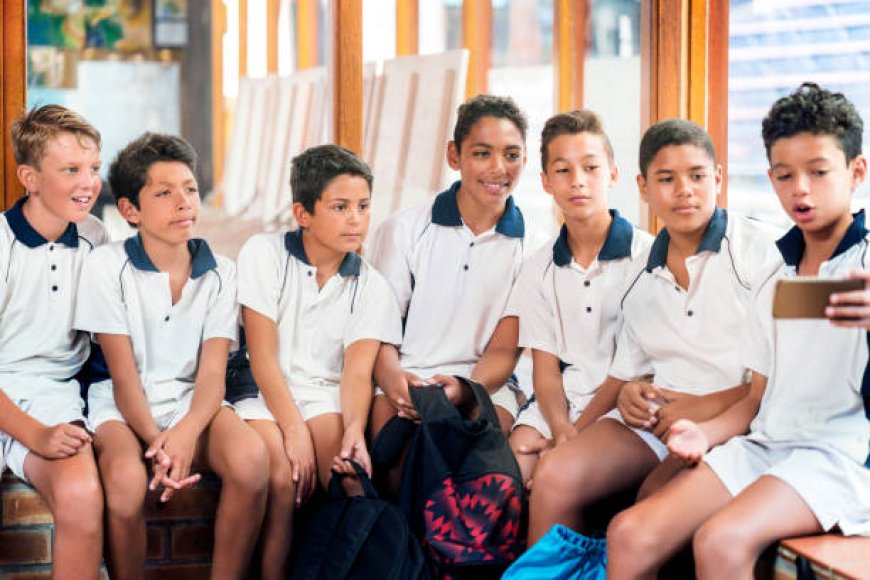Dialogue-Based Peace Clubs in Schools: Nurturing Harmony Through Student Engagement
Discover how dialogue-based peace clubs in schools promote conflict resolution, empathy, and social unity among students through active engagement.

Role of Dialogue in Promoting School Unity
One of the defining features of peace clubs in schools is their focus on dialogue. Rather than imposing rules from above, these clubs empower students to share their perspectives, listen actively to others, and find common ground. Dialogue becomes a tool to dissolve misunderstandings, challenge stereotypes, and build stronger interpersonal relationships. Students learn that conflict is a natural part of life, but it doesn't have to be destructive. Through storytelling, group discussions, and peer mediation, students gain the emotional intelligence necessary to manage disagreements constructively and promote unity in their diverse school communities.
Peacebuilding Through Reconciliation
Peace clubs in schools serve as incubators for peacebuilding through reconciliation practices. These practices include restorative justice circles, community-building activities, and reflective conversations that encourage accountability and healing. Rather than punishing students who misbehave, many peace clubs promote restorative responses where students can express their emotions, take responsibility, and work toward reparation. In this way, the clubs move beyond surface-level peace and delve into deeper, transformative reconciliation. As students participate in these practices, they develop not only personal maturity but also a sense of social responsibility, paving the way for a more just and compassionate school culture.
Building Empathy and Emotional Awareness
Empathy is central to the success of peace clubs in schools. Activities such as role-playing, journaling, and open sharing circles allow students to step into each others shoes. This emotional awareness reduces bullying, exclusion, and aggression. When students understand their peers struggles, theyre less likely to judge and more likely to support. Teachers report noticeable shifts in classroom dynamics where peace clubs are active, students become more patient, less reactive, and more willing to cooperate. Over time, this culture of empathy contributes to a healthier, more emotionally supportive school environment.
Empowering Student Leadership and Engagement
Another core strength ofpeace clubs in schools is the emphasis on student leadership. These clubs are often student-led, with rotating leadership roles that encourage participation from all grade levels. Students take responsibility for planning activities, moderating discussions, and even organizing school-wide peace campaigns. This sense of ownership empowers young people to become peacebuilders in their own right. They learn not just about conflict resolution, but also about teamwork, negotiation, and public speaking. This leadership experience can influence their academic performance, boost their self-esteem, and inspire future careers in social justice, law, or education.
Collaboration Between Schools and Communities
For peace clubs in schools to be truly effective, collaboration with parents, teachers, and community leaders is essential. Schools that involve local organizations, counselors, and peace educators in their programming offer more comprehensive support. Community involvement enhances the relevance of dialogue activities and brings in diverse perspectives. Parents who participate in peace club initiatives often report improved communication at home, while local leaders may offer mentorship and guidance. This school-community partnership strengthens the impact of peace clubs, allowing the values learned in school to ripple into families and neighborhoods.
Addressing Real-World Issues Through Safe Dialogue
Peace clubs in schools provide a safe space for students to discuss real-world challenges such as racism, gender inequality, poverty, and violence in a respectful and non-judgmental setting. These conversations help students connect classroom learning to their lived experiences and become critical thinkers. When young people are encouraged to voice their concerns and dreams, they feel valued and heard. This inclusion builds a sense of belonging, reducing feelings of alienation or marginalization. As students explore sensitive topics through structured dialogue, they learn to advocate for change in thoughtful, peaceful ways.
Sustainability and Long-Term Impact
To ensure the long-term sustainability of peace clubs in schools, school administrations need to provide consistent support, training, and resources. Peacebuilding is not a one-time event; its a long-term cultural shift. Schools can integrate peace club principles into their curriculum, daily routines, and disciplinary frameworks. Annual evaluations, feedback from students, and ongoing facilitator training can help clubs evolve and remain relevant. Over time, schools with strong peace club programs witness fewer behavioral issues, higher student engagement, and an overall improvement in school climate and academic performance.
Conclusion
In a world fraught with division, peace clubs in schools represent a hopeful investment in our collective future. By instilling the values of empathy, dialogue, reconciliation, and community engagement, these clubs empower young people to become peacemakers in their schools, families, and beyond. The impact of such clubs is not limited to improved student behavior; it contributes to a more compassionate society. By supporting these initiatives, we are not just addressing the symptoms of school conflict but nurturing the next generation of leaders who will champion peace, justice, and equity on a global scale.






































